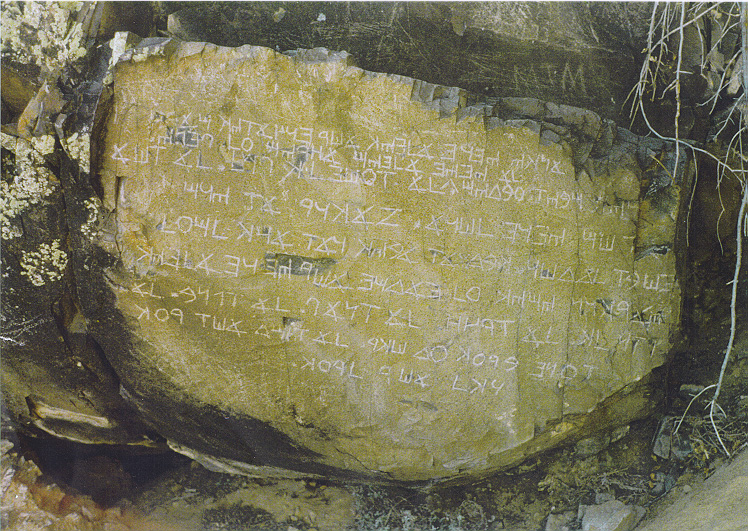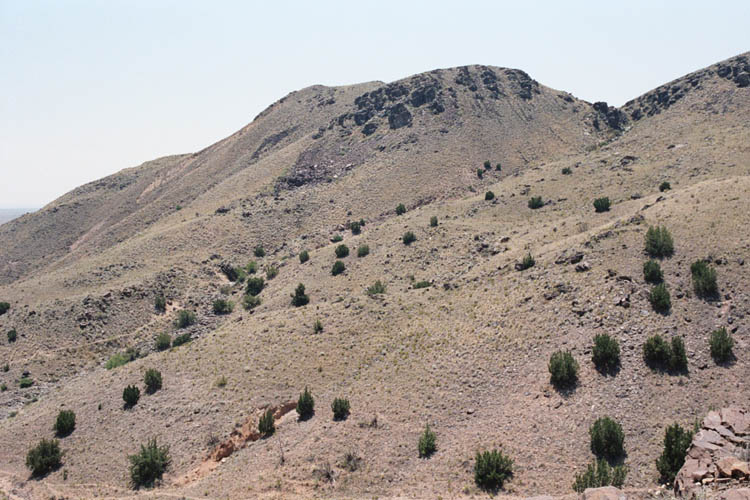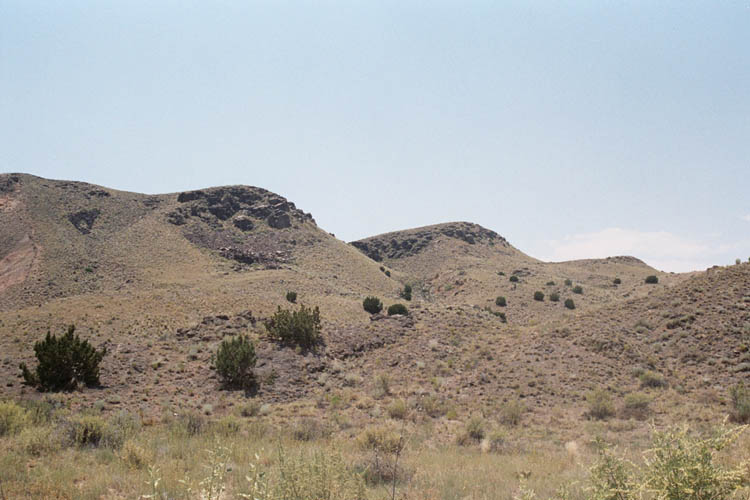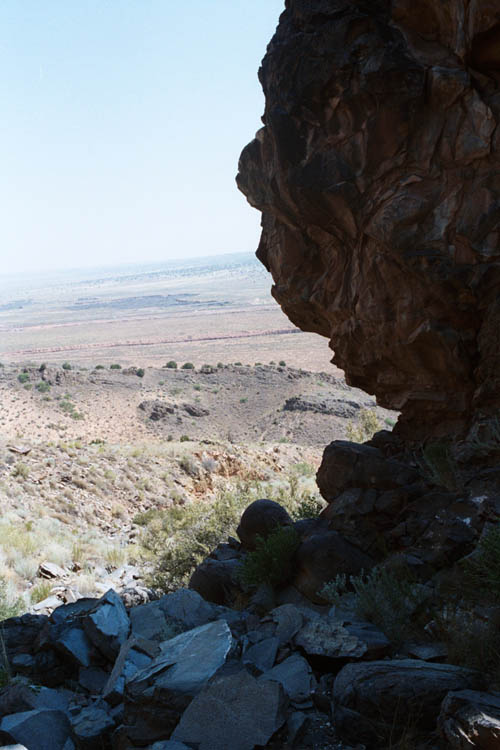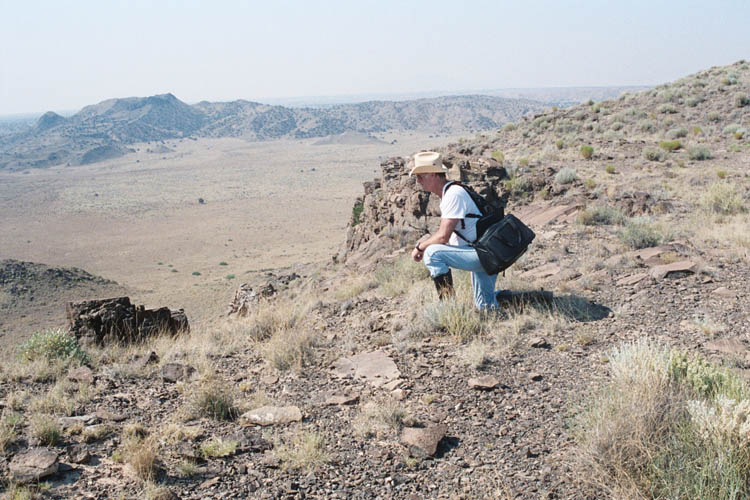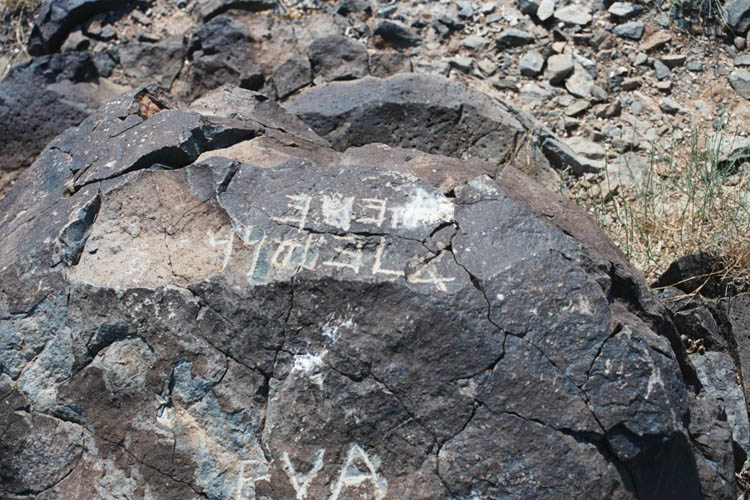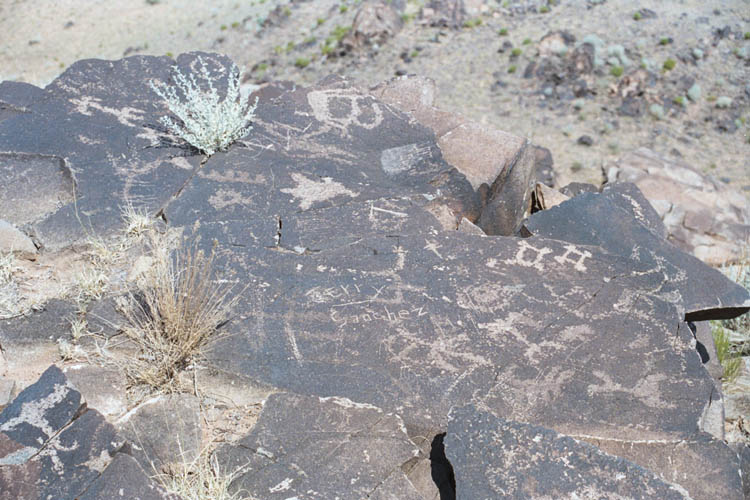Created by pastorbuddy on 3/11/2009
Real News 24/7
SPECIAL REPORT
Jews against Zionism: The
Hidden Protest
Massive Media Cover-up!

“On Sunday, June 1, 2003 at 5th Ave. and 59th St. in Manhattan, NYC a group of anti-Zionist Jews demonstrated against Zionism and the Zionist State celebrated by marchers in the so-called Israel Day Parade.” (Anti-Zionist Orthodox Jews protest against Israel ) As improbable as it may seem to the uninformed, a significant number of Jews in the United States, Great Britain, Israel and elsewhere oppose Zionism, Zionist oppression of the Palestinians and, in some instances, even the very existence of the State of Israel itself! We say hiddenprotest because this tangible opposition has been totally ignored by the news departments of the major television and radio networks, magazines and newspapers (in the last source, some papers, such as The New York Times, may make very brief mention of the protests, but even then they bury articles far from the front page).  Jews: Zionism is cause of instability in the world “The Anti-Zionist Orthodox Jews will proclaim their loyalty to pure Judaism and their opposition to Zionist heresy, which violates every principle of the Jewish religion. These people believe that the idolatrous Zionist ideology has nothing to do with Orthodox Jews, and that Jews are obligated by Judaism to live in peace and harmony with all other nations throughout the world, including Palestinian natives of course.”
Jews: Zionism is cause of instability in the world “The Anti-Zionist Orthodox Jews will proclaim their loyalty to pure Judaism and their opposition to Zionist heresy, which violates every principle of the Jewish religion. These people believe that the idolatrous Zionist ideology has nothing to do with Orthodox Jews, and that Jews are obligated by Judaism to live in peace and harmony with all other nations throughout the world, including Palestinian natives of course.”
According to one website, the reasoning behind the opposition is Zionism’s disobedience to God’s plan: “The Creator gave us the Holy Land thousands of years ago. Yet, when we sinned, He took it away and sent us into exile. Since that time our task is to wait for Him to send the Messiah.” In the minds of these Orthodox Jews, the Zionists sin by attempting a return to the Hold Land before the Messiah comes, instead of waiting patiently in exile. Obviously, should not be imagined that all or even most Orthodox Jews oppose Zionism nor that the ones that do are therefore ill-deposed towards Jewish nationalism. For an article concerning these issues, read Paul Gottfried’s informative historical study, “Wishful thinking about the Middle East,” where he observes:
The fact that some of the Orthodox in Eastern Europe had viewed Zionists as a threat to rabbinical authority or that some of the ultra-Orthodox believe Jewish nationalists have jumped the gun by establishing a pre-messianic commonwealth does not mean that these dissenting Orthodox were or are not Jewish nationalists. What separates them from the Zionists is the purely strategic question of when it is permissible to create a Jewish national state, where Jews can live apart from the nations of the earth. The Orthodox and the Zionists have never disagreed over whether such a project is desirable.
It is only in this context that one can begin to properly understand just what makes the anti-Zionist Orthodox Jew tick. Nevertheless, their opposition to Zionism is real and it is profound. And Gottfried is not entirely accurate: Yes, there is a difference concerning the timetable for reclaiming the Holy Land, but he misses the fact that although the Zionists have been able to marshal support from many Orthodox, they are also largely secular in outlook, even to the point of denigrating Jewish traditions, using religion only as a cynical means to win over the more conservative Jews and making race, not religion, the test for those seeking to immigrate to Israel.. Quotes from a few of these rabbis will suffice to show this.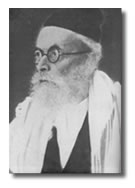 Reb Avraham Yeshayahu Karelitz, known as the Chazon Ish (right), on founders of Israel and their successors: “The only actual difference with the formation of the Zionists’ state is that before this they were hoodlums without arms and now the hoodlums have arms.” His belief that the Zionists in what was then Palestine were promoting a false version of Judaism is well-illustrated in the following anecdote:
Reb Avraham Yeshayahu Karelitz, known as the Chazon Ish (right), on founders of Israel and their successors: “The only actual difference with the formation of the Zionists’ state is that before this they were hoodlums without arms and now the hoodlums have arms.” His belief that the Zionists in what was then Palestine were promoting a false version of Judaism is well-illustrated in the following anecdote:
In 1946 a disciple of the Chazon Ish, very distressed, mentioned that a day does not go by without a Jew being killed by an Arab; the Chazon Ish, admonished him and said, “Why aren’t you at all worried that tens of thousands of Jewish children receive an education on non-belief, which is as burning the soul and the body. Is not this mass murder worse than the killings of the Arabs? our sages have clearly expressed that he who makes someone sin is worse than he who kills him.”
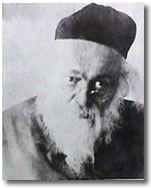 Concurring on this was Lubavitcher Rabbi Sholem Schneersohn: “It is surely clear that the Zionists not only are not approaching Judaism, but that they entirely destroy Jewish souls intentionally.” The same theme is taken up again and again; Rav Chaim Soloveichik of Brisk (left) declared: “The Zionists do not make Jews into heretics in order to have a state, they want a state in order to make Jews into heretics.” (For an extensive list of quotations from these and many other rabbis, see “Words of the Rabbis opposing Zionism” section of the Jews Against Zionismwebsite.
Concurring on this was Lubavitcher Rabbi Sholem Schneersohn: “It is surely clear that the Zionists not only are not approaching Judaism, but that they entirely destroy Jewish souls intentionally.” The same theme is taken up again and again; Rav Chaim Soloveichik of Brisk (left) declared: “The Zionists do not make Jews into heretics in order to have a state, they want a state in order to make Jews into heretics.” (For an extensive list of quotations from these and many other rabbis, see “Words of the Rabbis opposing Zionism” section of the Jews Against Zionismwebsite.
News blackout, persecution of anti-Zionist Jews
Jewish anti-Israel/anti-Zionist demonstrations have taken place from New York to London to Jerusalem (photos above right, below right, and below left and bottom, respectively…other photo slideshow), but this opposition has been effectively covered up by the controlled news media. (For an example, see the Rally for Israel link below.) Why is this? The very premise of an anti-Israel/anti-Zionist Jew is highly newsworthy by virtue of its uniqueness. The answer is twofold. First, by ignoring this phenomenon, they are better able to perpetuate the myths that all Jews support Israel and (less consciously) all Israelis support Zionism, so that Americans are conditioned to respond in knee-jerk fashion: Jew=pro-Israel, without considering the possibility of exceptions to this unreal universal. Secondly, by establishing this false premise, the Israel Firsters within the journalistic community are able to stifle any and all criticism of the Israeli government. They are able to do this by cultivating in the public mind the falsehood that to oppose Israel is tantamount to opposing all Jews, which, by extension, makes one an anti-Semitic, “Holocaust”-denying bigot. The Zionists fear that if the general public were to become aware of Jewish opposition to Israel, many people would see through the myth and cease giving that nation the unconditional support (and huge annual foreign aid package) it currently enjoys.
And the pro-Zionist media and their handlers have also manipulated (and, on occasion, coerced) Jewish opinion. In an article, “Judaism is not Zionism,” the Jews United against Zionism website states:
The Zionists have deceived many well meaning Jewish people via terror, trickery and false propaganda. They have at their disposal the use of a nearly universally subservient media. Whoever attempts to criticize them puts his livelihood and, at times, his very life in danger.
A case in point: Zionist oppression of Jews in Iraq Naeim Giladi, an Iraqi Jew, on the Zionist influence in that country:
I am writing this article for the same reason I wrote the book: to tell the American people, especially American Jews, that Jews from Islamic lands did not emigrate willingly to Israel; that to force them to leave, Jews killed Jews; and that, to buy time to confiscate even more Arab lands, Jews on numerous occasions rejected genuine peace initiatives from their Arab neighbors.…I write about what the first prime minister of Israel called ‘cruel Zionism.’…I write about it because I was part of it.
 Zionist intimidation of anti-Zionist and non-Zionist Jews has various guises. On March 18, 2003, London witnessed strong-arm attempts to suppress the free speech of those protesting Israel (see photo, right). Last fall, at the Rally for Israel in Washington, DC, Jewish Zionists posing as Christian Zionists shouted down rabbis who demonstrated against the rally.
Zionist intimidation of anti-Zionist and non-Zionist Jews has various guises. On March 18, 2003, London witnessed strong-arm attempts to suppress the free speech of those protesting Israel (see photo, right). Last fall, at the Rally for Israel in Washington, DC, Jewish Zionists posing as Christian Zionists shouted down rabbis who demonstrated against the rally.
Further, some Orthodox Jews also have even shown that before and during World War II the Zionists cut deals with Nazis and even left some of their coreligionists to perish in the camps, when they could have aided in their rescue. (This peculiar collaboration is also covered at length by the socialist Jew, Lenni Brenner, in the books,Zionism in the Age of the Dictators and 51 Documents: Zionist collaboration with the Nazis.) Incredibly, in a document to the Jewish Rescue Committee, which sought to secure the release of Jewish concentration camp prisoners, the Zionist Agency in Switzerland responded by callously declaring that “we must turn a deaf ear to the pleas and cries emanating from Eastern Europe.” (To read a translation of the complete letter at the Jews not Zionists website, under “menu” click “Zionism and the Holocaust,” then on “Min Hametzar.”)
Israel Shahak: “the world’s most conspicuous Jewish anti-Semite”
It should be noted, when the Zionists attempt to pigeonhole such sentiments to an ultra-Orthodox fringe, that several liberal (politically and/or religiously) Jews have also sounded their disapproval, even in Israel. Their opposition is less concerned with the religious aspects of the equation, focusing, rather, on the gross human rights violations that have been a part of the Zionists’ war against the Palestinians since Israel’s inception (and before). An Arabic website notes that
There are a number of Jewish intellectuals who never stopped criticizing Zionism and always opposed its ideology and objectives.
They began opposing Zionism at the inception of The Israeli League for Human Rights at the beginning of the 1970′s.
Intellectual Jews opposing Zionism include Elmer Berger, Norton Mezvinsky, Mosh Menuhin, Mick Ashley, Israel Shahak and Maxime Rodinson. Israel Shahak was the head of the league in 1970 and he was the first Jew to record detailed information about the number of children, elderly and woman killed, including Arab villages demolished by Hagana and Stern terrorist movements.
Israel Shahak’s records showed a total of 385 of 475 villages were demolished at the founding of Israel in 1948. (see Israel Shahak vs. Zionism)
 Shahak, a chemistry professor at Jerusalem’s Hebrew University and a Nazi concentration camp survivor wrote scathingly about the religious and cultural underpinnings of Zionism in many works, including the books Jewish Fundamentalism (co-authored by American history professor Norton Mezvinsky—review) Jewish History, Jewish Religion (review) and Open Secrets: Israeli nuclear and foreign policies (excerpts— review and another review by Norton Mezvinsky). He was also president of the Israeli League for Civil and Human Rights, a group which worked to defend the rights of Palestinians (a Google search for this organization did not find a website, so it may no longer be in existence). Such efforts have not gone without notice.
Shahak, a chemistry professor at Jerusalem’s Hebrew University and a Nazi concentration camp survivor wrote scathingly about the religious and cultural underpinnings of Zionism in many works, including the books Jewish Fundamentalism (co-authored by American history professor Norton Mezvinsky—review) Jewish History, Jewish Religion (review) and Open Secrets: Israeli nuclear and foreign policies (excerpts— review and another review by Norton Mezvinsky). He was also president of the Israeli League for Civil and Human Rights, a group which worked to defend the rights of Palestinians (a Google search for this organization did not find a website, so it may no longer be in existence). Such efforts have not gone without notice.
One of Shahak’s critics—Werner Cohn, also a Jewish academic—has described him as “the world’s most conspicuous Jewish anti-Semite”Some of Cohn’s attacks on points raised in Shahak’s book may be valid, but in general, there is far too much documentation there to refute the entire work. While Cohn questions the sources (or lack thereof) for certain of Shahak’s contentions, it is Shahak’s own credibility and honesty that are questioned in the following passage:
One of Shahak’s charges has been taken very seriously. Some thirty years ago Shahak reported to the press that he had personally witnessed the following incident: 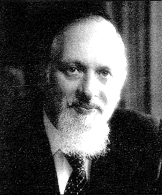 an Orthodox Jew saw an injured non-Jew on the Sabbath. To save the man’s life, it was necessary to call an ambulance. The Jew had the phone handy but would not allow a violation of the sabbath, i.e. use of the phone, because the injured was a non-Jew. In Shahak’s version, with which he begins this book [Jewish history, Jewish religion—Real News 24/7], the Jew here followed the ruling the of Orthodox rabbinate. The story was taken up by Ha-Arets in Israel, then by the Jewish Chronicle in London and other publications, all joining in a clamor against the barbaric Orthodox. (Dr. Shahak does not seem to notice that this clamor, which he duly notes, is in itself a refutation of his charge that current Jewish life is dominated by Orthodox inhumanity). Dr. Shahak, whose nose is longer than Pinocchio’s in any case, does not tell us the whole story of the incident. In the Summer 1966 issue of Tradition, an Orthodox Jewish journal, we have the much more credible account by Rabbi Immanuel Jakobovits (left—later the Chief Rabbi of the British Commonwealth). First of all, according to Rabbi Jakobovits, and contrary to Shahak’s allegation, the rabbinate had ruled clearly that not only can the Sabbath be violated under such circumstances, but such violation would be a religious duty, to save a non-Jewish life no less than a Jewish life. Moreover, we also learn that Dr. Shahak, when challenged to produce his “Orthodox Jew,” was forced to admit that this Jew did not exist.
an Orthodox Jew saw an injured non-Jew on the Sabbath. To save the man’s life, it was necessary to call an ambulance. The Jew had the phone handy but would not allow a violation of the sabbath, i.e. use of the phone, because the injured was a non-Jew. In Shahak’s version, with which he begins this book [Jewish history, Jewish religion—Real News 24/7], the Jew here followed the ruling the of Orthodox rabbinate. The story was taken up by Ha-Arets in Israel, then by the Jewish Chronicle in London and other publications, all joining in a clamor against the barbaric Orthodox. (Dr. Shahak does not seem to notice that this clamor, which he duly notes, is in itself a refutation of his charge that current Jewish life is dominated by Orthodox inhumanity). Dr. Shahak, whose nose is longer than Pinocchio’s in any case, does not tell us the whole story of the incident. In the Summer 1966 issue of Tradition, an Orthodox Jewish journal, we have the much more credible account by Rabbi Immanuel Jakobovits (left—later the Chief Rabbi of the British Commonwealth). First of all, according to Rabbi Jakobovits, and contrary to Shahak’s allegation, the rabbinate had ruled clearly that not only can the Sabbath be violated under such circumstances, but such violation would be a religious duty, to save a non-Jewish life no less than a Jewish life. Moreover, we also learn that Dr. Shahak, when challenged to produce his “Orthodox Jew,” was forced to admit that this Jew did not exist.
For the text of Lord Jakobovits’s paper, please click on http://www.realnews247.com/jakobovits_vs_shahak.htm
This is a significant charge, because Shahak has identified this instance as a defining moment in his life, one that caused him to rethink (and, ultimately, reject) his Orthodox upbringing. Much of his subsequent career as political activist/iconoclast can be traced to this event. If it didn’t happen, if it was really a non-event, then it would certainly be grounds to question Shahak’s veracity elsewhere, as well. The only source introduced by Cohn to show that “Dr. Shahak…was forced to admit that this Jew did not exist” is the Tradition article, “A Modern Blood Libel,” written not long after Shahak’s initial allegation. (A Google search was fruitless in finding more background material on this point.)
Unfortunately, neither Dr. Shahak nor Lord Jakobivits are alive, so they cannot be questioned concerning the matter. Since the rabbi didn’t live in Israel and the event allegedly occurred in Jerusalem, it must be wondered where the rabbi got his information and how reliable it was. If Shahak was forced to admit a lie, why would he have dared to use the falsehood in a book written years later? It could be argued that he didn’t think anyone would remember, but the possibility of detection seems a large risk to his reputation. And for that matter, how, in the first place, was he able to retain a good reputation for more than thirty years if all his enemies could simply raise the issue of his fabricated story. Yet apparently that never occurred, since only Cohn, of Shahak’s many critics, brings this up at all.
But all of this distracts from the issue of what Shahak was describing—was it credible? Is the notion of an “ultra-religious” (Shahak doesn’t use the word “Orthodox”) man refusing assistance on the Sabbath far-fetched? In his article, Rabbi Jakobivits quotes from the Talmud passages suggesting that a Jew would be morally obliged to help a non-Jew, but it is not uncommon to for rabbis to be able to glean theologically conflicting positions that vast work. The Brooklyn-born mass murderer Baruch Goldstein (right; see below concerning the Hebron massacre he committed) was an “ultra-religious” army physician, who not only would not have allowed his phone to be used in such a situation, but he would not treat a non-Jew—Sabbath or no Sabbath. Shahak, citing Israeli journals in an article linked below in the next section, writes:
But let me return to Goldstein’s refusals to treat the Gentiles. It turns out that he did it in principle, starting years before the massacre, but already in the capacity of an army physician and an officer. Aryeh Kizel in Yediot Ahronot, and “a correspondent” in Davar reported on March 1 that Goldstein, while still a conscript soon after his immigration to Israel, had been assigned as an artillery battalion doctor in Lebanon and flatly refused to treat the Gentiles. According to Kizel, he then declared straight out: “I am not willing to treat any non-Jew. I recognize as legitimate only two [religious] authorities: Maimonides and Kahane.” This declaration was made after a “refusal to treat a wounded Arab” who had to be referred to another military doctor as a result. “The background and consequences of the massacre in Hebron” (linked below in the next section)
The Kahane mentioned here was an other American, Rabbi Meir Kahane, whose teachings of vengeance were instrumental in Goldstein’s homicidal rampage. Concerning the teachings of Rabbi Moses Maimonides (also referred to as Rambam, short for his given name, R’ Moise ben Maimon), the12th century codifier of the Talmud, as they applied to “ultra religious” Jews, Allan Brownfeld (also mentioned below) in the January/February 2001 issue Washington Report for Middle East Affairs, quotes Rabbi Avarham Hecht, president of the 540-member Rabbinical Alliance of America, on the subject of halakah (Jewish law), as it pertains to those who would yield any land of Israel:
Asked by New York Magazine to clarify what sounded like a religious death threat, Hecht explained: “All I said was that according to Jewish law, any one person—you can apply it to whoever you want—any one person who willfully, consciously, intentionally hands over human bodies or human property or the human wealth of the Jewish people to an alien people is guilty of the sin for which the penalty is death. And according to Maimonides—you can quote me—it says very clearly, if a man kills him, he has done a good deed.” (“Extremism in Israel Is Fueled by a Growing Ultra-Orthodox Movement in the U.S.“)
So, the incident cited by Shahak is consistent with the mindset of certain Orthodox in Israel and many other examples could be noted. In the light of such widespread “ultra-religious” activity, it hardly seems necessary for him to have had to invent an episode.
“Refuseniks” and other anti-Zionist Israelis
Yonatan Ben-Artzi appeared in a Jerusalem courtroom last April dressed in tee shirt and blue jeans. in Israel—it was a show of defiance, as he was ordered to wear the uniform of an army reservist. The 20-year-old was making an appeal to the Supreme Court that his trial for refusing to join the Israeli Defense Forces should be moved to a civilian court. If court-marshaled, he could get three years in prison.
The name Yonatan Ben-Artzi won’t mean anything to most Americans, but the name of his uncle will—Benjamin Netanyahu, Israel’s finance minister and former hard-line prime minister. Ben-Artzi is just the most high-profile of the “refuseniks”—the nickname refers to a growing number of Israelis soldiers and enlistees who object to the treatment of the Palestinians and refuse to take part in what they see as state terrorism occurring in the West Bank and Gaza Strip. As a result, around 200 have been jailed, but this has not diminished their determination to seek justice for the oppressed. The man credited with giving the movement its impetus was the late Yeshayahu Leibovitz, a friend and Hebrew U colleague of Israel Shahak. Unlike Shahak, Leibovitz was an Orthodox Jew. Groups like Gush Shalom,founded by Israeli journalist Uri Avnery (below right),
terrorism occurring in the West Bank and Gaza Strip. As a result, around 200 have been jailed, but this has not diminished their determination to seek justice for the oppressed. The man credited with giving the movement its impetus was the late Yeshayahu Leibovitz, a friend and Hebrew U colleague of Israel Shahak. Unlike Shahak, Leibovitz was an Orthodox Jew. Groups like Gush Shalom,founded by Israeli journalist Uri Avnery (below right),  have championed the refuseniks’ cause (shown left, protesting the Iraq War) and an end to the continuing ill treatment of Arabs living in the Occupied Territories. Israel Shamir, a Siberian-born Israeli journalist, has also written much on the subject.
have championed the refuseniks’ cause (shown left, protesting the Iraq War) and an end to the continuing ill treatment of Arabs living in the Occupied Territories. Israel Shamir, a Siberian-born Israeli journalist, has also written much on the subject.
One such group, Courage to Refuse, consists of over 400 reservists. Members of the group have the gone before the Israeli Supreme Court with a petition, declaring:
The Israeli Defence Forces’ activities, notwithstanding the important goal of fighting terror, have a devastating impact on hundreds of thousands of innocent civilians. For this reason, the occupation is illegal.”
According to a BBC report: “The soldiers argue that Israel has an obligation under international law to provide public services to Palestinians in any territory it re-occupies, and that it is not doing this.”
Yeshayahu Leibovitz also coined the term “Judeo-Nazism” to describe the mentality that was behind the 1994 massacre of 29 Islamic worshippers at a Hebron mosque by Baruch Goldstein, a anti-Arab extremist. (See Shahak’s articles “The Ideology behind Hebron massacre” and the lengthier “The background and consequences of of the massacre in Hebron,” which also goes into the Israeli Army’s cover-up of certain details of the event.) Since then, comparisons of policies of the government Israeli President Ariel Sharon with those of the Nazis have become commonplace, though the first usage by Leibovitz was more restricted.
Israeli journalist Gershom Gorenberg, senior editor of The Jerusalem Report, in 2000 came out with a book, The End of Days: Fundamentalism and the Struggle for Temple Mount, on the religious extremist elements—Islamic, Jewish and American evangelical Protestant “Christian Zionists”—at work in the Holy Land In an interview with PBS about the book, he makes a surprising point concerning the origins of the Palestinian suicide attacks now so prevalent in the Middle East:
In a bizarre case of inter-religious influence, they adopted the method of suicide attacks on civilians that Goldstein had pioneered. The first big suicide bombing by Hamas came at the end of the forty-day mourning period after Goldstein’s massacre.
In The End of Days, Gorenberg roundly condemns the efforts to make Baruch Goldstein into a martyr and, concerning apocalyptic and potentially violent cults, says that the authorities must tread a fine line: “not treat beliefs as criminal [but] understand where those beliefs could lead.”
The contradiction inherent in the position of these Israelis is that while they oppose the outward manifestations of Zionism, they nonetheless are citizens of a country in which the Zionist ideology is intricately woven into the nation’s very institutions; quite literally, without Zionism there would be no Israel. So their task is monumental, as it requires a fundamental redefinition of Israel that includes full citizenship for all who live there. (This underscores the falsity of America’s bringing “democracy”—even by force, as in the case of Iraq—to some countries, but ignoring the fact that Israel is a democracy in name only, as it permits non-Jews to have only a second-class status.)
Noam Chomsky, Israel and the “Holocaust”
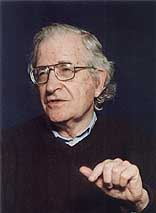 Noam Chomsky (right), MIT professor of modern languages and linguistics and political radical who, in books like Media control: the spectacular achievements of propaganda and Manufacturing consent: the political economy of the mass media has been a significant media critic (“Any dictator would admire the uniformity and obedience of the U.S. media”), has also written and lectured much against the horrendous political realities in the Middle East—and Zionism’s role in creating them. In his book Fateful Triangle: The United States, Israel and the Palestinians, Chomsky decries the double standard of the controlled news media in reporting the conflict, with the Israelis always portrayed as morally upright victims, but the Palestinians as fanatical killers:
Noam Chomsky (right), MIT professor of modern languages and linguistics and political radical who, in books like Media control: the spectacular achievements of propaganda and Manufacturing consent: the political economy of the mass media has been a significant media critic (“Any dictator would admire the uniformity and obedience of the U.S. media”), has also written and lectured much against the horrendous political realities in the Middle East—and Zionism’s role in creating them. In his book Fateful Triangle: The United States, Israel and the Palestinians, Chomsky decries the double standard of the controlled news media in reporting the conflict, with the Israelis always portrayed as morally upright victims, but the Palestinians as fanatical killers:
The contrast is clear enough in journalism and scholarship, and it is also familiar in standard media fare, where the Arab terrorist is routinely contrasted with the heroic Israeli. It would, for example, be inconceivable for a TV drama to portray an Israeli or Jewish character in the manner of the standard Arab villain, despite the ample record of Israeli terrorism over many years, effectively concealed in the United States.
However, the calumny he has received over such opinions pales in comparison to the enduring enmity he’s reaped as a result of his defense of French academic Robert Faurisson’s right to challenge certain alleged facts concerning the “Holocaust” without fear of losing tenure. In an essay “Some Elementary Comments on The Rights of Freedom of Expression,” Chomsky went so far as to write:
Let me add a final remark about Faurisson’s alleged “anti-Semitism.” Note first that even if Faurisson were to be a rabid anti-Semite and fanatic pro-Nazi—such charges have been presented to me in private correspondence that it would be improper to cite in detail here—this would have no bearing whatsoever on the legitimacy of the defense of his civil rights. On the contrary, it would make it all the more imperative to defend them since, once again, it has been a truism for years, indeed centuries, that it is precisely in the case of horrendous ideas that the right of free expression must be most vigorously defended; it is easy enough to defend free expression for those who require no such defense. (Also see his “All denials of free speech undercut a free society,” which also denounces the deceit and intolerance of the Zionists.)
While he said he had not read Faurisson’s conclusions and had no particular interest in doing so, Chomsky stated (with remarkable open-mindedness for a Jew) that
I see no anti-Semitic implications in denial of the existence of gas chambers or even denial of the Holocaust. Nor would there be anti-Semitic implications, per se, in the claim that the Holocaust (whether one believes it took place or not) is being exploited, viciously so, by apologists for Israeli repression and violence. I see no hint of anti-Semitic implications in Faurisson’s work. (Chomsky letter to W. D. Rubinstein, 1981).
For this and for his approval of Jewish History, Jewish Religion, Chomsky was attacked by Canadian sociology professor Werner Cohn inPartners in hate : Noam Chomsky and the Holocaust deniers, which in typical Zionist fashion seeks to equate—without the slightest need for any supporting evidence—the simple denial or questioning of certain dogmas of the “Shoah” canon with the hatred of the Jewish people. Others Jewish critics of Chomsky for his anti-Zionist, pro-free speech positions include Marxist-turned-”neoconservative” author David Horowitz and pro-torture ACLU lawyer Alan Dershowitz.
Other voices of “self-hating Jews”
 There are other notable voices outside of Israel who are critical of Zionism’s aspirations. In 1978, Rabbi Elmer Berger (left), executive director of American Council for Judaism (1943-1967), and after 1968 as founder and president of the American Jewish Alternatives to Zionism, wrote a short study, Zionist Ideology: Obstacle to Peace, that is just as relevant twenty-five years later. Berger once declared:
There are other notable voices outside of Israel who are critical of Zionism’s aspirations. In 1978, Rabbi Elmer Berger (left), executive director of American Council for Judaism (1943-1967), and after 1968 as founder and president of the American Jewish Alternatives to Zionism, wrote a short study, Zionist Ideology: Obstacle to Peace, that is just as relevant twenty-five years later. Berger once declared:
The unarguable, political fact is that between Begin, the so-called ‘extremist,’ and [Chaim] Weizmann, the suave, deliberately ambiguous ‘moderate,’ the difference was one of only method or tactic; as indeed today (1984) the difference between a Kahane [the late Meir] and a Shamir or even a Peres, is one of only radicalism or gradualism.
Today, nearly two decades after this observation, the truism can be applied to Israel that the more things changes, the more they remain the same.
Around the same time as Rabbi Berger was writing Zionist Ideology: Obstacle to Peace, Alfred Lilienthal published The Zionist Connection (later appearing in a much expanded edition as The Zionist Connection II—click on cover for book review) a searing critique of the dominant Israeli ideology and its influence on America. Lilienthal, who served in the U.S. military and State Department, aroused controversy as early as 1949 with his article, “Israel’s Flag Is Not Mine,” published inReader’s Digest. Early in his book he makes a disturbing parallel between Zionism and the Third Reich, then explains the need for writing as he does:
Alfred Lilienthal published The Zionist Connection (later appearing in a much expanded edition as The Zionist Connection II—click on cover for book review) a searing critique of the dominant Israeli ideology and its influence on America. Lilienthal, who served in the U.S. military and State Department, aroused controversy as early as 1949 with his article, “Israel’s Flag Is Not Mine,” published inReader’s Digest. Early in his book he makes a disturbing parallel between Zionism and the Third Reich, then explains the need for writing as he does:
In doling out incarceration and death while sweeping through conquered Europe, did not the Fuhrer undo the laws of emancipation for which many Jews had so long struggled, as he decreed: “You are not a German, you are a Jew – you are not a Frenchman, you are a Jew – you are not a Belgian, you are a Jew”? Yet these are the identical words that Zionist leaders have been intoning as they meticulously promoted the in-gathering to Israel (Palestine) of Jews from around the globe, even plotting their exodus from lands in which they have lived happily for centuries.
If at times this book seems unduly critical of Israel, and neglects to place in balance the oft-repeated arguments in its favor, it is simply because the gigantic propaganda apparatus of Israel-World Zionism has spun such extensive and deeply-ingrained mythology that there is hardly enough space to refute widely-accepted theses and expose the picture as it really is. (p. 5)
Norman Finkelstein (below, right), author of The Holocaust Industry (a look at the cynical financial  exploitation of the “Holocaust” by certain Jews), received his doctorate from Princeton University’s Department of Politics for his thesis on the theory of Zionism. Jewish critics have accused him of being an “anti-Semite” and “Holocaust denier,” despite the fact that both of his parents were in Nazi concentration camp (The Washington Post’s Marc Fisher was forced to print a retraction of the latter allegation—found on Finkelstein’s website). He also has written both a book, Image and Reality in the Israel-Palestine Conflict, and articles critical of the way the Palestinians are mistreated by the Zionist government of Israel.
exploitation of the “Holocaust” by certain Jews), received his doctorate from Princeton University’s Department of Politics for his thesis on the theory of Zionism. Jewish critics have accused him of being an “anti-Semite” and “Holocaust denier,” despite the fact that both of his parents were in Nazi concentration camp (The Washington Post’s Marc Fisher was forced to print a retraction of the latter allegation—found on Finkelstein’s website). He also has written both a book, Image and Reality in the Israel-Palestine Conflict, and articles critical of the way the Palestinians are mistreated by the Zionist government of Israel.
In that book, Dr. Finkelstein notes that the forced transfer of Palestinians was advocated by the British as early as the late 1930s and that
The right-wing Zionist leader, Vladimir Jabotinsky, taking heart from Nazi demographic experiments in conquered countries (about 1.5 million Poles and Jews were expelled in and hundreds of thousands of Germans resettled in their place), exclaimed: “The world has become accustomed to the idea of mass migrations and has almost become fond of them. Hitler—as odious as he is to us—has given this idea a good name in the world.”
Michael Neumann, a philosophy professor at Trent University in Ontario, Canada, also has contributed works concerning the Mideast crisis. In “What is anti-Semitism?” he shows how Zionists exploit the term anti-Semitism by accusing their critics of such an offense and how they mangle the meaning of words to suit their purpose:
“Anti-Semitism”, properly and narrowly speaking, doesn’t mean hatred of Semites; that is to confuse etymology with definition. It means hatred of Jews. But here, immediately, we come up against the venerable shell-game of Jewish identity: “Look! We’re a religion! No! a race! No! a cultural entity! Sorry—a religion!” When we tire of this game, we get suckered into another: “anti-Zionism is anti-Semitism! ” quickly alternates with: “Don’t confuse Zionism with Judaism! How dare you, you anti-Semite!”
Well, let’s be good sports. Let’s try defining anti-Semitism as broadly as any supporter of Israel would ever want: anti-Semitism can be hatred of the Jewish race, or culture, or religion, or hatred of Zionism. Hatred, or dislike, or opposition, or slight unfriendliness.
The serious side of this in the practical order is that the use of the “anti-Semitism” slur is made by the media lapdogs of the Zionist Israeli government to help deflect criticism of its criminal policies. (It makes committing atrocities against the Palestinians so much easier when one doesn’t need to answer for them!)
 Syndicated columnist and author Allan Brownfeld (left) has written and lectured much on media bias as a member ofAccuracy in Media. In addition, he has penned incisive articles about Zionism and related issues, such as the one cited above regarding the “ultra-Orthodox” and their incitements to violence. It’s important to note that while many of those mentioned above are on the Left , Brownfeld is a conservative, proving that anti-Zionist Jews can be found all across the political and theological spectrums).
Syndicated columnist and author Allan Brownfeld (left) has written and lectured much on media bias as a member ofAccuracy in Media. In addition, he has penned incisive articles about Zionism and related issues, such as the one cited above regarding the “ultra-Orthodox” and their incitements to violence. It’s important to note that while many of those mentioned above are on the Left , Brownfeld is a conservative, proving that anti-Zionist Jews can be found all across the political and theological spectrums).
On another theme, already mentioned above, Brownfeld notes the odd connection between Zionism and Nazism:
The point has been made by many commentators that Zionism has a close relationship with Nazism. Both ideologies think of Jews in an ethnic and nationalistic manner. In fact, the Nazi theoretician Alfred Rosenberg frequently quoted from Zionist writers to prove his thesis that Jews could not be Germans. (Emphasis added; from “Zionism and Anti-Semitism: A strange alliance through history,” Washington Report on Middle East Affairs, July/August 1998 )
Finally, in this partial overview, attorney Stanley Cohen is standing up for the rights of Arab-Americans and their Palestinian relatives who have suffered at the hands of the Israelis. (He outlines the case here in a radio interview—the webpage has him misidentified as “Stephen” Cohen. Note the other links there, including Noam Chomsky audios.)
These are but a few of the more significant figures among the Jews opposing Zionism. Through the willful media suppression of such opinions, most Americans are ignorant of their existence. Yet the Zionists are painfully aware of them and have created a special term of reproach for these and other such critics of Israel/Zionism—self-hating Jews.* But such scorn only underscores the effectiveness of their criticism. However small in size, the importance of this Jewish resistance to the aims of the Zionists should not be underestimated. The news blackout of their activities is continuing proof of this.
Their outspokenness must also be viewed as a much needed corrective for those who—buying into the Zionist propaganda without realizing it—are quick to brand all Jews as unquestioning supporters of Israeli aggression and oppression. The sooner anti-Zionists from different religions work together to end its domination in the Middle East, the sooner lasting peace can be brought to the region.
(For much more, see Edward C. Corrigan’s Jewish Criticism of Zionism, a well-documented treatment of the subject.)
Also see our Special Report: Hitler, Nazism & Zionism

Jews against Zionism: The Hidden Protest initially was posted on 6-11-03. It was extensively expanded on 6-16 and 6-23-03.
*Concerning the origins of this term, a biography of Shahak notes: “When he is accused, just as are American Jewish critics of Israel, of being a ‘self-hating Jew,’ he responds with first-hand knowledge. ‘That is a Nazi expression. The Nazis called Germans who defended Jewish rights self-hating Germans.’”
DISCLAIMER: Needless to say, we at Real News 24/7 do not necessary agree with every thought or the implication of every article we link to, nor with every stand or position taken by the person or organization responsible for an article we recommend. Nor do those who wrote such articles necessarily agree with everything we say. Real News 24/7 assumes no responsibility for the opinions expressed in any work taken from external links. In each section we have listed the best articles we could find at this time on a given subject with regard to documentation and analysis of the subject under discussion, regardless of minor or major flaws in the article. We soon hope to have an analysis of the strengths and weaknesses of each article recommended, which will appear right under the link to the article itself. The information in our “Latest News and Analysis” feature is meant to bring to your attention information or views generally not easily found on the Big TV networks and other controlled media sources.

